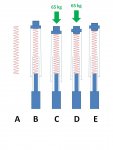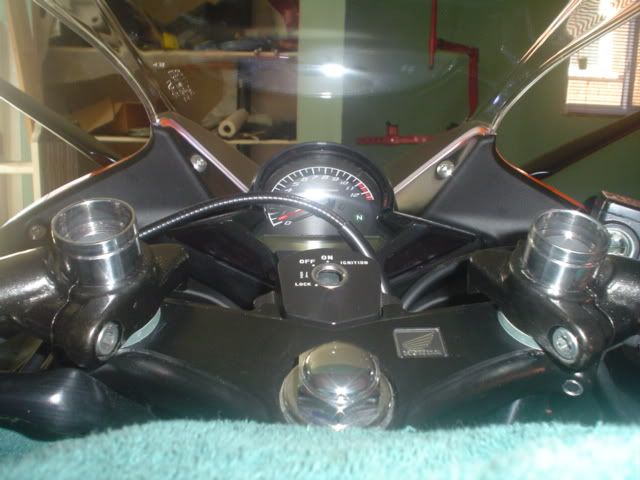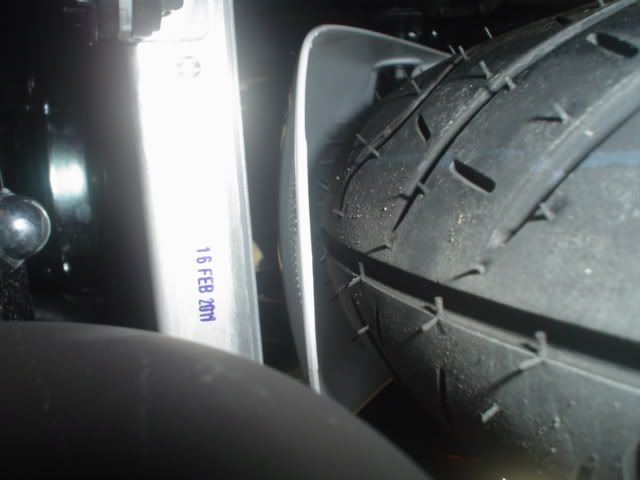Hi all -
I posted this on another forum, but thought it might interest some here as well...
Over the past five years or so I have gotten very interested in learning about motorcycle suspension and suspension tuning - lots of reading, modding my bike, trying things out at the track, etc.
Even though my overall understanding of suspension tuning is still at a very basic level, I have come to realize that no more than 10% of riders have any idea what a preload adjustment physically does. The erroneous idea that adding spring preload somehow "stiffens" the suspension is incredibly pervasive. It's not just regular riders who labour under this misconception...you read it constantly in motorcycle magazines (Sport Rider is a frequent offender) and on motorcycle websites...guru suspension tuner Dave Moss even gets it wrong quite often when he explains it (although in that case, when pressed, he admits that it is incorrect and just a bit of loose language on his part).
I finally got so tired of trying to explain this to people that I made this figure (attached) to try to help. I offer it here for your inspection and use, along with the following descriptions of parts A to E:
A. Spring is 600 mm long, and has a rate of 1 kg / mm. That is, it compresses 1 mm for each kg of force applied.
B. Spring has been installed. Preload adjuster is wound all the way out. With fork fully extended, the spring is compressed by 15 mm. This is the “installed preload”. Thus, it will take 15 kg of force to start compressing the fork. After that it will compress by 1 mm for each additional kg of force applied.
C. There is now 65 kg of bike + rider weight bearing down on the fork leg (130 kg across both legs). This causes the fork to compress by 50 mm from its fully extended length. That is, the first 15 kg is supported by the 15 mm spring preload, then the additional 50 kg compresses the spring 50 mm. Thus, with this load, the total “sag” in the fork is 50 mm.
D. Since 50 mm is too much sag, the preload adjuster has been wound in 10 mm. This extends the fork by 10 mm, so the sag is now 40 mm. Note that the length of the spring has not changed. Adding preload does not compress the spring, it just extends the fork. This is always true, except if the fork is topped out.
E. With the same preload setting as in D, the weight has been removed from the suspension. Now, there is 25 mm of preload (the 15 mm installed preload shown in B, plus the 10 mm preload added in D). Thus, it will take 25 kg of force to start compressing the fork. After that, it will compress 1 mm for each additional kg of force applied, as always.
Summary: Adding preload does not result in a spring that is more compressed in use, and therefore does not make the suspension feel “stiffer”. The suspension will still compress by the same amount per unit force applied, regardless of the preload setting. Adding preload merely extends the fork so that it has more positive travel available before bottoming.
I posted this on another forum, but thought it might interest some here as well...
Over the past five years or so I have gotten very interested in learning about motorcycle suspension and suspension tuning - lots of reading, modding my bike, trying things out at the track, etc.
Even though my overall understanding of suspension tuning is still at a very basic level, I have come to realize that no more than 10% of riders have any idea what a preload adjustment physically does. The erroneous idea that adding spring preload somehow "stiffens" the suspension is incredibly pervasive. It's not just regular riders who labour under this misconception...you read it constantly in motorcycle magazines (Sport Rider is a frequent offender) and on motorcycle websites...guru suspension tuner Dave Moss even gets it wrong quite often when he explains it (although in that case, when pressed, he admits that it is incorrect and just a bit of loose language on his part).
I finally got so tired of trying to explain this to people that I made this figure (attached) to try to help. I offer it here for your inspection and use, along with the following descriptions of parts A to E:
A. Spring is 600 mm long, and has a rate of 1 kg / mm. That is, it compresses 1 mm for each kg of force applied.
B. Spring has been installed. Preload adjuster is wound all the way out. With fork fully extended, the spring is compressed by 15 mm. This is the “installed preload”. Thus, it will take 15 kg of force to start compressing the fork. After that it will compress by 1 mm for each additional kg of force applied.
C. There is now 65 kg of bike + rider weight bearing down on the fork leg (130 kg across both legs). This causes the fork to compress by 50 mm from its fully extended length. That is, the first 15 kg is supported by the 15 mm spring preload, then the additional 50 kg compresses the spring 50 mm. Thus, with this load, the total “sag” in the fork is 50 mm.
D. Since 50 mm is too much sag, the preload adjuster has been wound in 10 mm. This extends the fork by 10 mm, so the sag is now 40 mm. Note that the length of the spring has not changed. Adding preload does not compress the spring, it just extends the fork. This is always true, except if the fork is topped out.
E. With the same preload setting as in D, the weight has been removed from the suspension. Now, there is 25 mm of preload (the 15 mm installed preload shown in B, plus the 10 mm preload added in D). Thus, it will take 25 kg of force to start compressing the fork. After that, it will compress 1 mm for each additional kg of force applied, as always.
Summary: Adding preload does not result in a spring that is more compressed in use, and therefore does not make the suspension feel “stiffer”. The suspension will still compress by the same amount per unit force applied, regardless of the preload setting. Adding preload merely extends the fork so that it has more positive travel available before bottoming.





